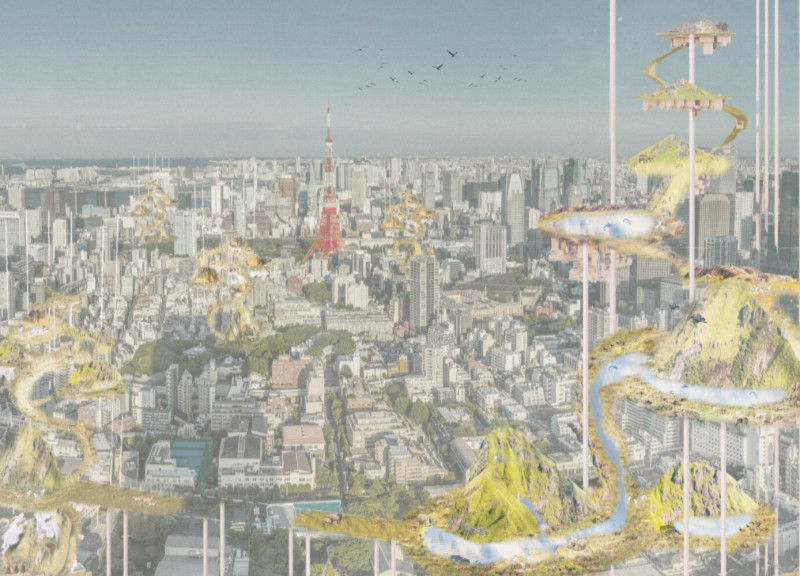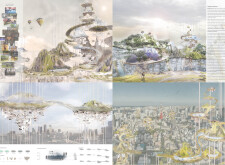5 key facts about this project
Urban Integration with Vertical Landscapes
The "Biodiversity Nexus" employs vertical green spaces that rise among the urban landscape. These spaces include elevated gardens and terraces acting as community areas that provide both aesthetic appeal and functional habitats for local wildlife. The innovative use of height not only maximizes land utility in a densely packed city but also introduces diverse ecological opportunities that enhance urban biodiversity.
Key elements of the design incorporate a series of dynamic pathways that encourage movement and exploration through these green areas. The paths facilitate access to interactive environments and educational zones, emphasizing user engagement and promoting community insight into ecological preservation efforts. Materials used in the structure, including recycled concrete, glass, steel, and smart materials, contribute to the sustainability objectives, ensuring that the project is both resilient and environmentally conscious.
Holistic Approach to Sustainability
A unique design approach of the "Biodiversity Nexus" is its integration of living ecosystems within an urban context. This focus on biodiversity is central to the project’s functionality. The architecture serves not only as a living space but also as a part of a larger ecological network intended to attract and support local wildlife. Various habitats are established within the design, contributing to urban greening efforts while promoting temperature regulation and stormwater management.
Furthermore, the project utilizes advanced technologies such as IoT sensors and renewable energy systems, which enhance operational efficiency and reduce environmental impact. This intelligent infrastructure fosters a sustainable living environment that sets a standard for future developments.
Engagement with Nature and Community
The architectural design prioritizes public accessibility through open spaces and pathways that create a sense of communal ownership. By emphasizing inclusivity, the project invites diverse users to interact with both the architecture and the surrounding natural environment. Educational components embedded within the green spaces inform visitors about biodiversity and urban ecology, fostering a culture of awareness and advocacy for environmental stewardship.
In summary, the "Biodiversity Nexus" exemplifies a thoughtful blend of architecture and nature, showcasing innovative design strategies that prioritize sustainability and community engagement. For further insights into the architectural plans and sections as well as the overall design objectives, readers are encouraged to explore the project's presentation in detail.























